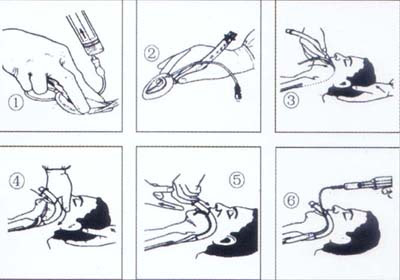











Laryngeal mask airways (LMAs) keep a patient’s airway open during a sedation code. A laryngeal mask is composed of an airway tube that connects to an elliptical mask with a cuff which is inserted through the patient’s mouth and once deployed forms an airtight seal on top the glottis allowing a secure airway.
$26.00
The laryngeal mask airway (LMA) is an airway device developed by British anesthesiologist Dr. Archi Brain. It has been in use since 1988. Initially designed for use in the operating room as a method of elective ventilation, it is a good alternative to the Ambu Bag, freeing the hands of the provider with the benefit of less gastric distention. Initially used primarily in the operating room setting, the LMA has more recently come into use in the emergency setting as an important accessory device for management of the difficult airway.
The LMA is shaped like a large endotracheal tube on the proximal end that connects to an elliptical mask on the distal end. It is designed to sit in the patient’s hypopharynx and cover the supraglottic structures, thereby allowing relative isolation of the trachea.
Successful placement of an LMA depends particularly upon pharyngeal tone, the position of head and neck, the shape of the palato-pharyngeal curve, and the patient’s depth of sedation.
LMA cuff volumes should be adjusted to the minimum needed to achieve airtight seal. It is better to choose the correct size of LMA than to overinflate a cuff that is too small.
| Weight | 1 lbs |
|---|---|
| Dimensions | 3 × 1 × 1 in |
| LMA SIZE | SIZE 5 (Large Adult), SIZE 3 (Small Adult), SIZE 2 (Small Child), SIZE 2.5 (Medium Child) |